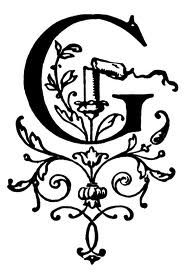-
Scroll Page | Stop Scrolling
-
-
1
Prepare for the birth of your baby by educating yourself about the benefits of delayed cord cutting. There are no known benefits of immediate cord clamping and cutting; it is a longstanding practice because it speeds up the process of getting the baby weighed and cleaned. According to a study by Judith Mercer, CNM, et al. cutting the umbilical cord immediately after birth reduces the transfer of red blood cells to the baby by up to 50 percent.
-
2
Consider the possibility of delayed cord clamping if your baby is born prematurely. According to research published in the Journal of Pediatrics, waiting just a minute to cut the umbilical cord has a protective effect for low-birth-weight babies against conditions such as intraventricular hemorrhage and late-onset sepsis, which is an infection.
3
Talk to your midwife or doctor about your preferences for cutting the baby’s umbilical cord. Don’t be intimidated to point out that the evidence is clear that delayed cord cutting is best for the baby and reduces the chances of anemia later in the baby’s first year. -
4
Take charge of the decisions surrounding your baby’s birth and the way you want the cord cutting to be handled. If the baby is healthy at birth, there is no reason the cord needs to be clamped and cut right away. The cord typically stops pulsing within three to five minutes, during which time you can pull the baby up to your chest and enjoy those first precious bonding moments.
Tips & Warnings
- Don’t assume your midwife will automatically delay cord cutting. Surveys have found that two-thirds of certified nurse midwives cut the umbilical cord before it has stopped pulsing.
- If you decide delayed cord clamping is important to you, post your partner or doula at the end of the bed during the birth to make sure that your wishes are carried out.
- Having cesarean surgery doesn’t mean the cord must be cut right away. Talk to your surgeon about waiting at least 45 seconds to cut the umbilical cord if you have a surgical birth.
Instructions
Things You'll Need
- Sterilized Scissors
- Gauze
1
-
Make sure the umbilical cord has stopped pulsating. The doctor and nurses should cue you when the time is right. You want the blood to have stopped pulsating so the mom and the baby will have both gotten all the blood back out of the cord.
-
2
Use two clamps to hold the umbilical card in place. Again, the doctor and nurses should help you with this part.
- 3
Hold the sectioned-off part of the umbilical cord with gauze.
-
4
Cut between the two clamps with sterilized scissors.
-
5
Dab the excess blood while cutting the cord.
Tips & Warning
- Using gauze keeps the excess blood from splattering.
Don't worry about hurting the mom or baby, neither of them can feel any pain via the umbilical cord.
An umbilical cord is thick so don't be alarmed if you find it difficult to cut.
Decide before delivery if you want to keep the cord blood. A growing number of new parents are deciding to keep this blood and bank it for future use
-
1


I remember being present for the birth of both of our children, though my level of involvement took a new turn at the birth of our second child. Just moments after his delivery, as he lay crying in the hands of the doctor, she handed me a pair of scissors and told me to cut the umbilical cord.
This, of course, took me completely by surprise, and I first paused to look at her in bewilderment before lining up the blades and cutting the cord, figuring that I had to act fast since our son was crying and needed to be freed from the last constraints of the womb. It turns out, however, that my desire for haste may have been misguided.
It is standard procedure to cut a baby’s umbilical cord within 30 seconds to a minute after birth, but doctors are beginning to question this practice and are looking into the potential health benefits of keeping it intact and waiting longer before they cut the cord.
In a recent article in the Journal of Cellular and Molecular Medicine, experts are suggesting that leaving the cord intact for a longer period would allow more of the umbilical cord blood to flow to the child and may have significant health benefits. The cord blood transports nutrients, oxygen and stem cells to the baby. Stem cells have been in the news recently for having a great deal of therapeutic potential.
The news is particularly relevant in light of the fact that many common health issues with newborns are linked to developmental problems with their organs, a situation that might be aided by the infusion of stem cells, which can mature into any organ in the body. This benefit may be especially true for premature babies and those suffering from malnutrition. Furthermore, some experts believe that such disorders as respiratory distress, certain forms of lung disease, anemia, and eye problems could potentially be avoided. However, in certain instances, especially where resuscitation is required, immediate cutting of the cord is necessary.
Cutting the cord early has only been practiced in the past 50 years, coinciding with the modern practice of delivering babies. When a baby first enters the world, the placenta and umbilical cord begin pulsing in order to pump blood to the baby. Once the blood equilibrates, the cord becomes still and the flow of blood ceases. Currently, it is common practice for doctors or midwives to clamp the cord within 30 seconds to a minute after birth. The basis for this timeframe is not completely clear, though it does facilitate the harvesting of cord blood stem cells. The authors of the current study believe that this clamping should be delayed, at least until the cord stops contracting and delivering its blood to the baby.
Historically, babies were born by having the mother in a more upright position to help facilitate the delivery of the child (a position still practiced today in certain cultures). When this method is employed, gravity helps to ensure the complete transfer of blood.
For now, there is no clear consensus to which approach is better, or for that matter, which one will be employed by the doctor. However, the current paper does offer some compelling thoughts on that endorse taking a delayed approach.
If you are expecting a child and have questions or concerns, voice them to your doctor. For more information, check out the website WebMD.com.
Cutting the Umbilical Cord
 |
| Cutting the Umbilical Cord |
In the past several decades, the protocol for cutting the umbilical cord at birth has traditionally been to immediately clamp and cut it after the baby emerges from the womb. Recent research shows that this practice may not only be unnecessary, but actually compromises the baby’s health by depriving him of his full blood supply. Understanding the research can help you make an informed choice when it comes to cutting your baby’s umbilical cord.
Instructions







沒有留言:
張貼留言